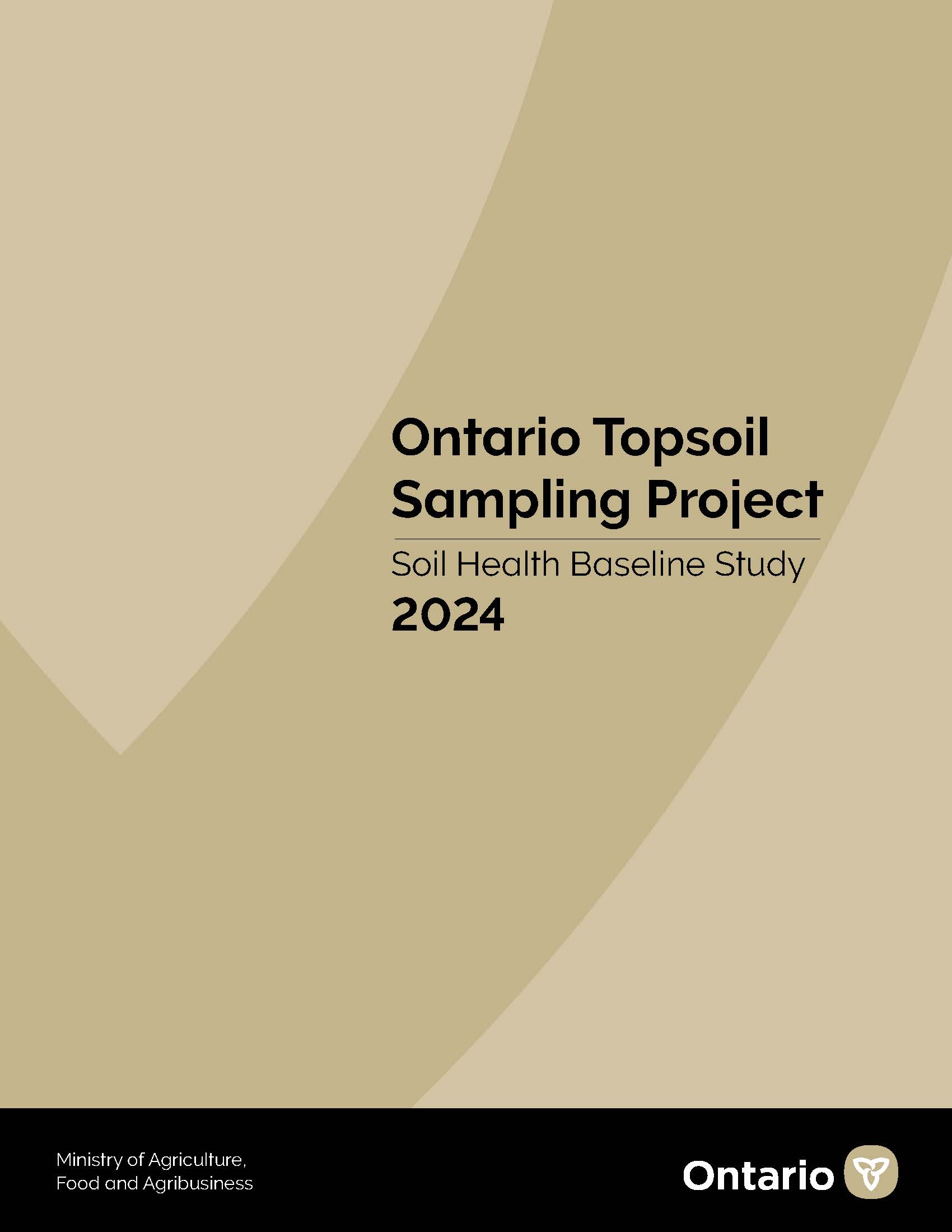Ontario Topsoil Sampling Project 2024
Learn about indicators of soil health in Ontario.

Executive summary
The Ontario Topsoil Sampling Project involved comprehensive sampling of topsoil and documentation of a variety of land-use management trends related to soil health at targeted locations throughout southern Ontario. This 30-page report provides baseline information and illustration about indicators of soil health in Ontario.
Results from the project data showed land management risks and best management practices are used to mitigate risks.
Land management risks
- Soil compaction is a widespread issue on a high proportion of fine-textured (clay-rich) soils, as well as on approximately 50% of medium-textured (loam) and coarse-textured (sand-rich) soils.
- Soil texture impacts a soils inherent ability to store organic matter and impacts Soil Health Test values. Coarse-textured (sand-rich) soils have a lower inherent ability to store organic matter compared to fine-textured (clay-rich) soils.
- Tillage and water erosion was identified as a significant risk on hill-top locations in the field, where the depth of topsoil was thinnest.
- Cropping systems that incorporated perennials in the rotation saw higher soil health values.
Best management practices of project participants
- Crop rotation: 91% indicated they incorporate crop rotation (2 or more annual crops), 63% indicated they incorporate 3 or more annual crops in their rotation, while 5% did not use crop rotation.
- Perennial crops: 27% indicated that they use a perennial crop in their cropping system. The most common perennial was a forage crop (such as hay).
- Cover crops during non-growing season: 43% indicated they incorporate at least one cover crop into annual cropping systems. 29% of respondents use a single species cover crop.
- Organic amendments: 51% indicated they use organic amendments and manure was most common (46%). Compost and biosolids account for between 1–2% in various combinations.
- Tillage: 13% indicated they use low disturbance tillage practices. 29% indicated moderate disturbance tillage practices. 40% indicated high disturbance tillage practices. No disturbance was classified as land not disturbed at all (such as pasture) and accounted for 13% of all responses.
Find soil information, data and publications like Ontario topsoil sampling project 2024 on the Ontario Soils GeoHub.
Disclaimer
If you require this information in an alternative format, please contact ag.info.omafra@ontario.ca. We will:
- acknowledge your request within 3 business days
- provide you with the content within 15 business days
Updated: June 24, 2025
Published: December 05, 2024